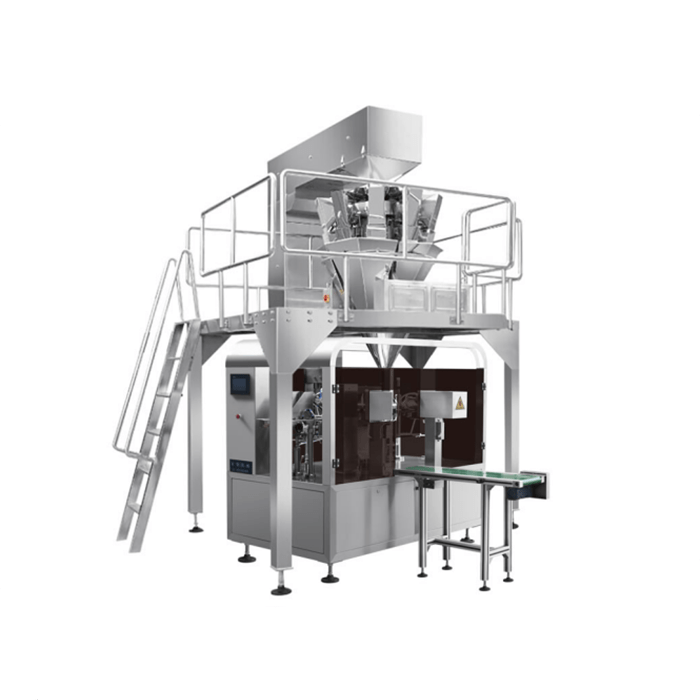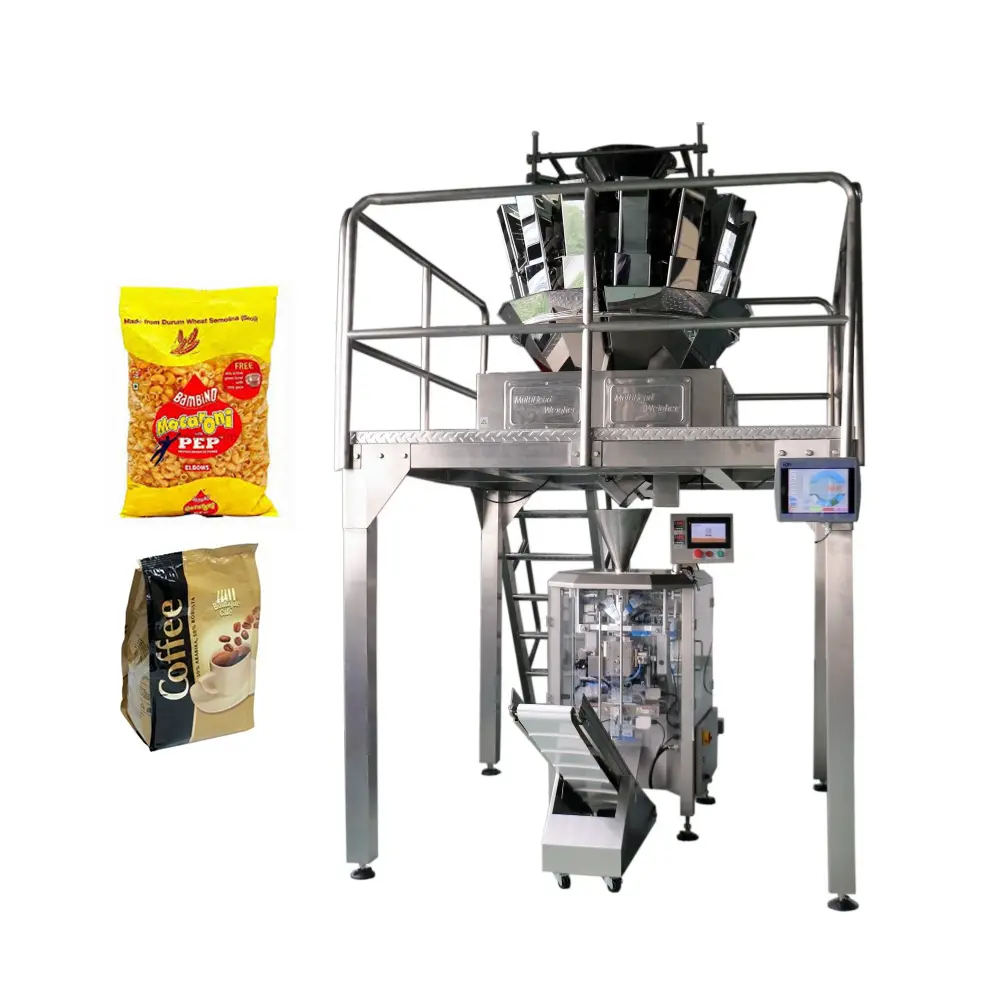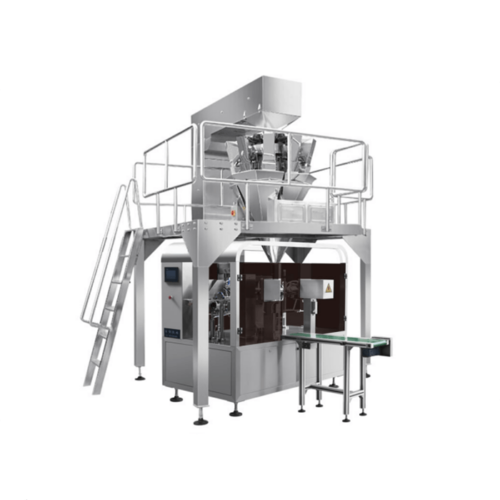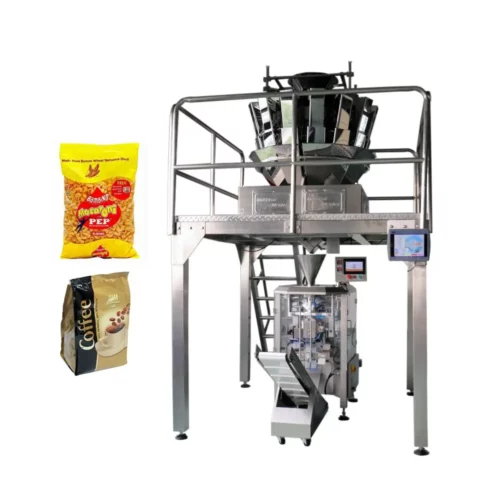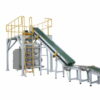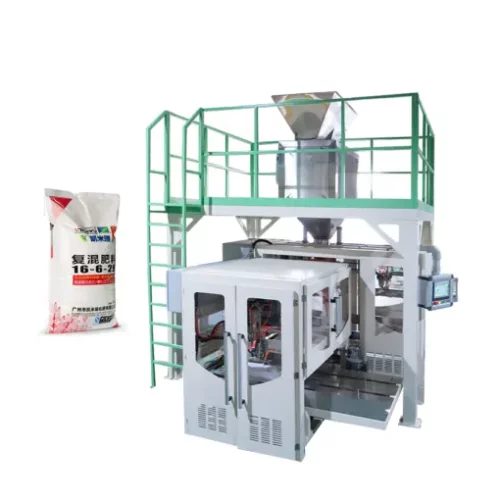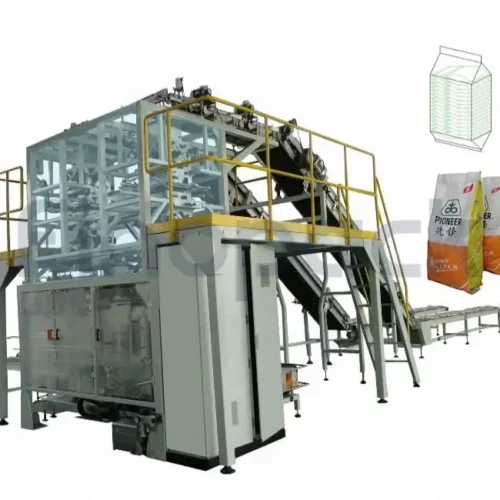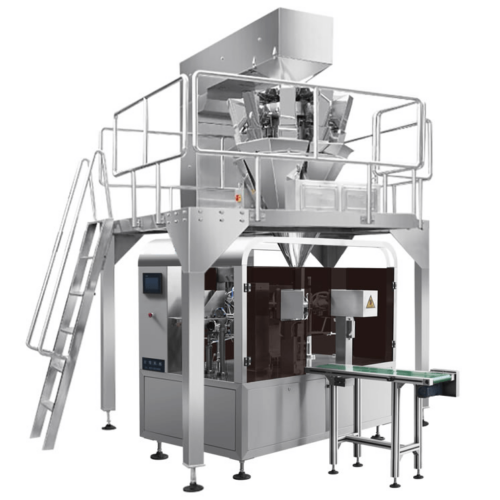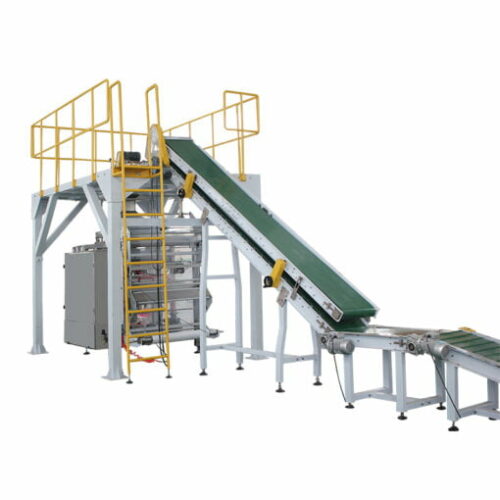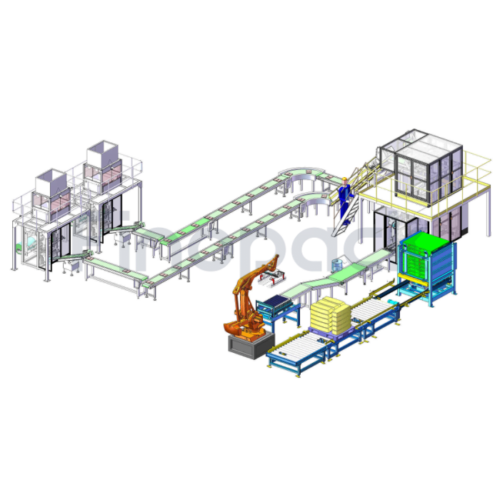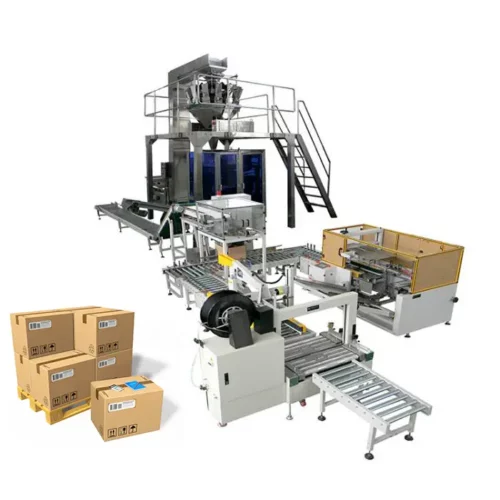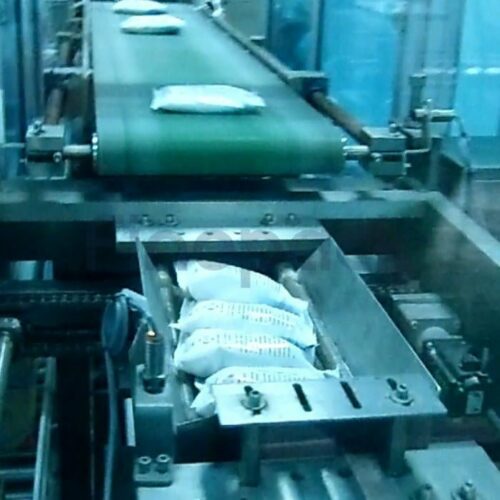List Technical Parameters of "Rice Packing Machine"
A Rice Packing Machine is designed for the efficient and precise packaging of rice, ensuring quality and facilitating handling and transportation. Here are the essential technical parameters:
1. Capacity:
- Output Speed: 10-50 bags per minute
- Weight Range: 500g to 50kg per bag
2. Power Requirements:
- Voltage: 220V/380V, 50Hz/60Hz
- Power Consumption: 1.5kW to 5kW, depending on the model and capacity
3. Machine Dimensions:
- Width: Typically 1000-1500 mm
- Height: Usually 1800-2500 mm
- Length: Around 2000-3000 mm
4. Weight:
- Varies between 500kg to 1500kg
5. Material:
- Construction: Stainless Steel for food safety compliance
- Contact Parts: High-grade stainless steel (SS304/SS316)
6. Packing Materials:
- Compatible with Polypropylene (PP), Polyethylene (PE), and Laminates
- Bag Types: Pillow bags, gusseted bags, block-bottom bags
7. Sealing Type:
- Heat Sealing
- Impulse Sealing
8. Control System:
- PLC (Programmable Logic Controller) with HMI (Human Machine Interface) for ease of operation
9. Weighing Accuracy:
- Up to ±0.2% of set weight
10. Conveyor Specifications:
- Adjustable Speed
- Length: Typically 2-4 meters
11. Compressed Air Requirement:
- Pressure: 0.6-0.8 MPa
- Consumption: 0.2-0.6 m³/min
12. Filling Mechanism:
- Volumetric cups or Auger filling based on rice type
13. Additional Features:
- Dust Extraction System
- Auto-correcting Function for sealing and cutting
- Safety Interlocks and Emergency Stop
14. Options:
- Date and Batch Coding
- Nitrogen Flushing
- Multi-head Weighers for higher precision
These parameters ensure optimal performance, accuracy, and hygiene in rice packaging operations.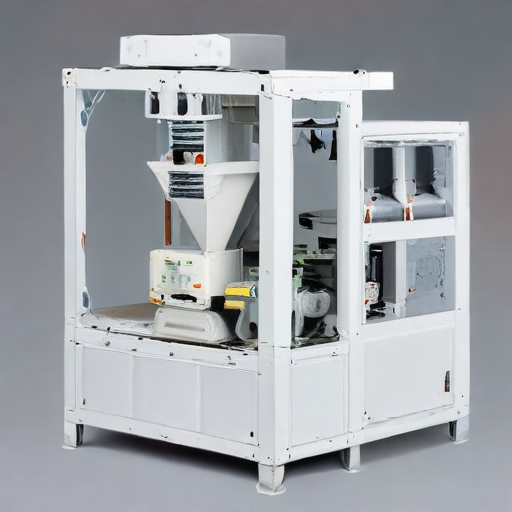
List Product features of "Rice Packing Machine"
A Rice Packing Machine is a specialized piece of equipment designed for efficiently packing rice into various types of containers. Here are some key product features:
1. High Efficiency and Speed: Capable of packaging large quantities of rice in minimal time, improving overall productivity.
2. Automated Operations: Features fully automated packaging processes including weighing, filling, sealing, and labeling.
3. Precision Weighing: Integrated with high-precision weighing systems to ensure accurate measurements, reducing waste and ensuring consistency.
4. Versatility: Suitable for various packaging materials such as plastic bags, paper bags, and woven sacks.
5. User-Friendly Interface: Equipped with an intuitive control panel or touchscreen for easy operation and setting adjustments.
6. Customizable Settings: Allows for adjustments in packing sizes, from small retail packs to large bulk quantities.
7. Durable Construction: Made from high-quality, corrosion-resistant materials like stainless steel, ensuring long-term durability and hygiene.
8. Sealing Options: Offers various sealing methods like heat sealing, vacuum sealing, and zip locking to meet different storage requirements.
9. Integrated Printer: Optional built-in printer for date codes, batch numbers, and branding information on packaging.
10. Safety Features: Includes emergency stop buttons, safety guards, and alarms to ensure operator safety.
11. Energy Efficient: Designed to consume less power without compromising on performance.
12. Low Maintenance: Engineered for easy maintenance with accessible parts and minimal need for frequent servicing.
13. Compact Design: Space-saving design suitable for small and large facilities.
14. Scalability: Modular components allow for easy upgrades and customization according to production needs.
15. Compliance: Meets industry standards and regulations, ensuring food safety and quality control.
These features collectively ensure that the Rice Packing Machine delivers optimal performance, reliability, and user satisfaction.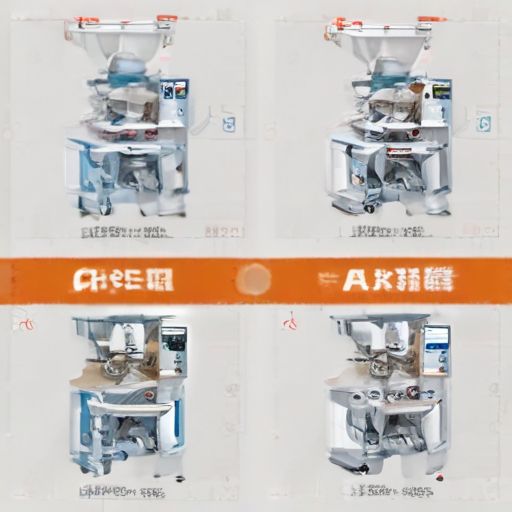
List Application of "Rice Packing Machine"
Sure, here are the applications of a rice packing machine concisely outlined:
1. Retail Packaging: Automated packing of rice into various retail sizes (e.g., 1 kg, 5 kg, 10 kg) for sale in supermarkets, grocery stores, and online platforms. Ensures uniformity in weight and appearance.
2. Bulk Packaging: Efficiently packs large quantities of rice into sacks (e.g., 25 kg, 50 kg) for distribution to wholesalers, restaurants, and large-scale food service providers. Enhances handling and transportation.
3. Vacuum Packing: Utilized to extend shelf life by removing air and sealing rice in vacuum-packed bags, which helps in preserving freshness and preventing contamination.
4. Custom Branding: Facilitates the packaging of rice with custom labels, designs, and branding for various companies. Helps in marketing and building brand identity.
5. Export Packaging: Prepares rice for international shipping, adhering to specific regulations and standards of different countries. Ensures rice remains intact and high-quality upon arrival.
6. Food Safety Compliance: Ensures rice is packed in a hygienic environment, reducing the risk of contamination and meeting food safety standards and certifications.
7. Cost Efficiency: Automates the packing process, reducing manual labor costs and increasing efficiency. Maximize output with minimal human intervention.
8. Quality Control: Integrates systems for weight accuracy, sealing integrity, and packaging consistency, ensuring each package meets quality standards.
9. Multiple Grains Packaging: Designed to handle various types of rice and possibly other grains or pulses, providing versatility for grain processing companies.
10. Reduced Wastage: Precision packing decreases the likelihood of overfilling or underfilling, significantly reducing product wastage and ensuring better inventory management.
By utilizing a rice packing machine, businesses can streamline operations, enhance product quality, and boost overall productivity.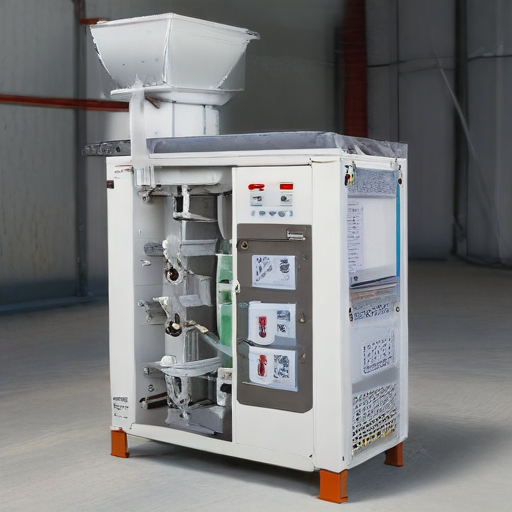
List Various Types of "Rice Packing Machine"
Rice packing machines come in various types, each suited for specific applications and packing requirements. Here’s a quick overview:
1. Vertical Form Fill Seal (VFFS) Machines: These are versatile and widely used for packing rice in bags of various sizes. They form the packaging material into a pouch, fill it with rice, and then seal it.
2. Horizontal Form Fill Seal (HFFS) Machines: Unlike VFFS, these machines work horizontally to create, fill, and seal pouches. They’re well-suited for pillow bags and gusseted pouches.
3. Automatic Weighing and Packing Machines: These machines are equipped with multi-head weighers to accurately weigh the rice before packing. Ideal for high-speed operations and consistent weight accuracy.
4. Vacuum Packing Machines: These are used to prolong the shelf life of rice by vacuuming out air before sealing the package. They are available in both chamber and external types.
5. Pre-Made Pouch Packing Machines: These machines take pre-made pouches, fill them with rice, and seal them. They are suitable for stand-up pouches, zipper pouches, and other custom types.
6. Bulk Packing Machines: Designed for industrial scale packing, these machines are used to pack large quantities of rice into sacks or big bags, often ranging from 5kg to 50kg.
7. Stick Pack Machines: These machines produce long, narrow packs that are suitable for single-serving or small quantities of rice, aimed at retail or sample distributions.
8. Semi-Automatic Packing Machines: These require manual intervention for some stages of the packing process. Suitable for small businesses with lower volume needs.
9. Mini Doypack Machine: Used for producing doypack or stand-up pouches, these compact machines are suitable for smaller production scales or specialized packaging.
By selecting the appropriate type of rice packing machine, manufacturers can enhance efficiency, accuracy, and product shelf life, catering to different market needs and preferences.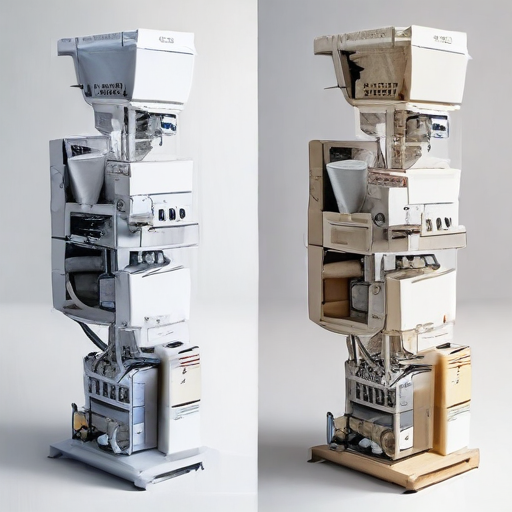
Custom Manufacturing Options for Rice Packing Machine
When customizing a rice packing machine, several options can enhance performance to meet specific operational needs. Below are key customizable features:
1. Capacity and Speed:
- Adjustable packing speeds ranging from 10 to 100 bags per minute.
- Various bag weight options (500g, 1kg, 5kg, 10kg, etc.)
2. Material Compatibility:
- Different machine builds for handling plain, aromatic, and parboiled rice.
- Corrosion-resistant materials for durability, especially for humid environments.
3. Bag Types:
- Compatibility with different bag types such as pillow bags, gusseted bags, and vacuum-sealed bags.
- Support for biodegradable and recyclable materials for eco-friendly packaging.
4. Precision and Accuracy:
- High-precision weighing systems with load cells or volumetric cups.
- Advanced sensors to ensure filling accuracy, minimizing waste.
5. Automation and Integration:
- PLC (Programmable Logic Controller) for automated operation and seamless integration with upstream and downstream processes.
- HMI (Human Machine Interface) for user-friendly control.
6. Sealing Options:
- Variety of sealing methods like heat sealing, ultrasonic sealing, and zipper sealing.
- Customizable seal designs for branding purposes.
7. Custom Designs and Printing:
- Integrated printers for date coding, batch numbers, and logos.
- Adjustable components to accommodate various bag sizes and shapes.
8. Quality Control:
- Metal detectors to ensure product safety.
- Inspection systems for bag integrity and fill level.
9. Maintenance and Safety:
- Easy-to-clean designs with removable parts.
- Safety enclosures and emergency stop functions.
10. Energy Efficiency:
- Energy-efficient motors and systems to reduce operational costs.
Customized rice packing machines ensure optimized performance, improve packaging quality, and meet specific market demands effectively.
List Quality Control and The Manufacturing Process of "Rice Packing Machine"
Quality Control
1. Material Inspection: Ensure all components meet industry standards.
2. Component Testing: Evaluate electrical and mechanical parts for functionality.
3. Assembly Testing: Check sub-assemblies for accuracy and precision in fitting.
4. Software Verification: Ensure control software is bug-free and configured correctly.
5. Operational Testing: Run the machine to verify performance under real conditions.
6. Calibration: Adjust settings for accurate weight and sealing.
7. Final Inspection: Thorough review of the finished product for defects.
8. Documentation and Traceability: Maintain records for compliance and future reference.
9. Customer Feedback: Use feedback to continuously improve quality.
Manufacturing Process
1. Design and Prototyping: Develop a prototype from CAD designs and test basic concepts.
2. Sourcing Materials: Procure high-quality raw materials and components from reliable suppliers.
3. Machining and Fabrication: Manufacture parts using CNC machines, laser cutting, and welding.
4. Sub-assembly Building: Assemble smaller parts like weighing mechanisms, conveyor systems, and sealing components.
5. Software Integration: Install and configure the control software, ensuring synchronization with hardware.
6. Main Assembly: Combine all sub-assemblies into the main framework of the machine.
7. Wiring and Electrical Work: Lay out and install electrical components, ensuring compliance with safety standards.
8. Testing and Calibration: Perform rigorous functionality tests and calibrate the machine for accuracy.
9. Finishing: Apply protective coatings and aesthetic finishes.
10. Packaging and Shipping: Carefully pack the machine to prevent damage during transit and ship to customers.
By adhering to stringent quality control measures and a well-defined manufacturing process, manufacturers can ensure the production of reliable and efficient rice packing machines.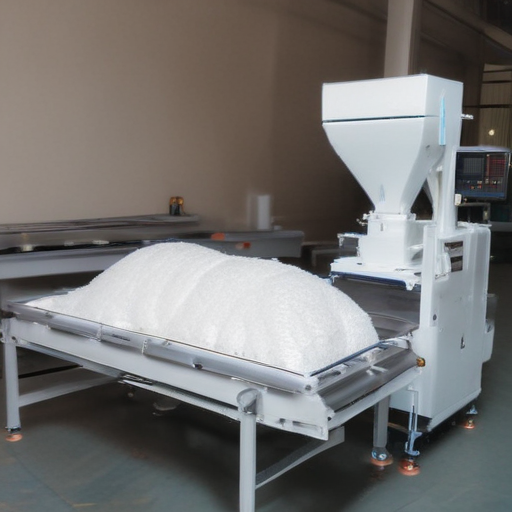
How to use "Rice Packing Machine"
Using a rice packing machine effectively involves several steps:
1. Setup:
- Place the machine on a stable, flat surface.
- Ensure all parts, such as hoppers and belts, are clean and free of obstructions.
- Connect the machine to a power source.
2. Loading:
- Fill the machine's hopper with rice. Avoid overfilling to prevent jams.
3. Settings:
- Input the desired package size and weight using the control panel.
- Adjust settings for bag type and sealing preferences.
4. Operation:
- Start the machine using the designated button or switch.
- The machine will automatically measure and dispense the correct amount of rice into each bag.
- Bags are then sealed, either through heat-sealing or other sealing methods, depending on the machine's design.
5. Monitoring:
- Observe the packing process for any issues such as misfills or jams.
- Adjust settings or troubleshoot as necessary.
6. Shutdown:
- Once the packing is complete, turn off the machine.
- Clean all parts to ensure proper hygiene and maintenance.
Safety Tips:
- Always read the manufacturer’s manual before operating the machine.
- Wear appropriate safety gear, such as gloves and safety glasses.
- Do not attempt to fix or clean the machine while it is running.
By following these steps, you can ensure efficient and effective use of a rice packing machine.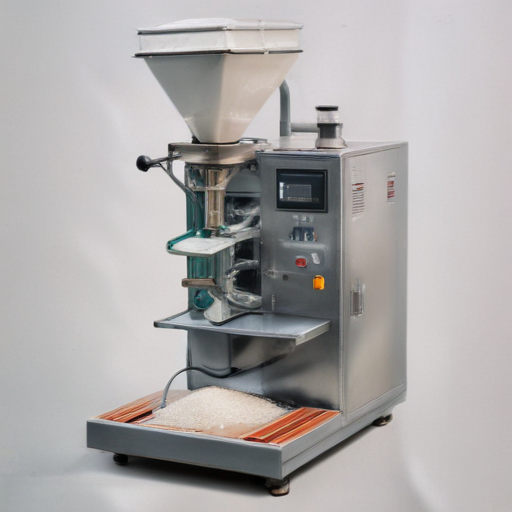
List Properties and Terms of "Rice Packing Machine"
Rice Packing Machine Properties and Terms
1. Capacity: The maximum amount of rice the machine can pack per hour, commonly measured in kg/hr.
2. Speed: The rate at which the machine can complete the packing cycles, often denoted as packs per minute (PPM).
3. Accuracy: Precision in weighing rice to ensure consistent package weights, crucial for maintaining product consistency and customer satisfaction.
4. Automation Level: Determines whether the machine is manual, semi-automatic, or fully automatic. Higher automation usually means greater productivity.
5. Bag Types: Compatibility with various bag types such as polyethylene (PE), polypropylene (PP), laminates, or paper bags.
6. Sealing Mechanism: The method used to seal the rice packs, which could be heat sealing, ultrasonic sealing, or zip locks.
7. Weighing System: Methods may include load cells, mechanical scales, or digital scales for precise measurements.
8. Feed System: Mechanisms for feeding rice into the weighing and packing sections, such as gravity feeders, screw feeders, or vibratory feeders.
9. Control Panel: Interface for setting parameters such as weight, speed, and packaging mode, usually featuring touch screens for ease of use.
10. Material Handling: Components responsible for conveying, filling, and transporting the rice within the machine, including conveyors and hoppers.
11. Frame Material: Often made of stainless steel or other corrosion-resistant materials to comply with hygiene standards.
12. Energy Efficiency: Power consumption rates, which can affect operational costs.
13. Maintenance & Cleaning: Ease of upkeep, critical for maintaining hygiene and reducing downtime.
14. Additional Features: May include printers for date coding, label applicators, or nitrogen flushing systems to ensure product freshness.
By understanding these properties and terms, one can make a more informed decision when selecting a rice packing machine that best suits their operational needs.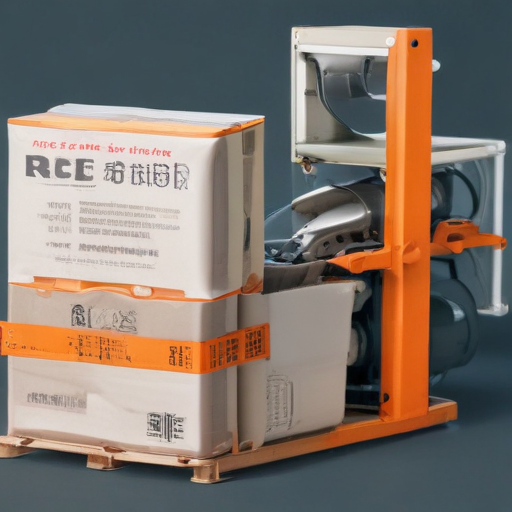
List The Evolution history of "Rice Packing Machine"
The evolution of rice packing machines reflects advancements in technology and automation over the decades:
1. Manual Methods (Pre-20th Century): Initially, rice was packed manually in sacks or containers using basic tools. This labor-intensive process lacked precision and efficiency.
2. Simple Mechanical Devices (Early 20th Century): The introduction of basic mechanical devices, like hand-operated sealing machines, marked the first step toward mechanization, improving speed and consistency in packing rice.
3. Semi-Automatic Machines (Mid-20th Century): The post-World War II era saw the development of semi-automatic packing machines. These devices required some manual input but automated key processes like weighing and sealing, enhancing productivity.
4. Fully Automatic Machines (Late 20th Century): By the 1980s and 1990s, fully automatic rice packing machines emerged. These systems handled the entire packing process, from weighing and filling to sealing and labeling, with minimal human intervention. The use of programmable logic controllers (PLCs) streamlined operations, ensuring accuracy and speed.
5. Integration with Computer Technology (Early 21st Century): The 2000s brought the integration of computer technology and digital controls, enhancing precision, operational efficiency, and real-time monitoring. Machines could now be adjusted remotely and offered greater customization options.
6. Smart and IoT-Enabled Machines (2010s-Present): Today’s rice packing machines feature Internet of Things (IoT) capabilities, enabling them to communicate with other devices, collect data, and optimize performance through predictive maintenance and analytics. Automation advancements include robotic arms and advanced sensors, ensuring even higher accuracy and reducing human labor to minimal oversight.
7. Eco-Friendly and Sustainable Solutions (Future Trends): The latest trends focus on sustainability, incorporating eco-friendly materials and energy-efficient designs to reduce environmental impact. Innovations continue to push toward greater efficiency, reduced waste, and enhanced packaging quality.
This evolution showcases a journey from rudimentary manual packing to sophisticated, smart systems, significantly boosting efficiency and ensuring consistent, high-quality packaging.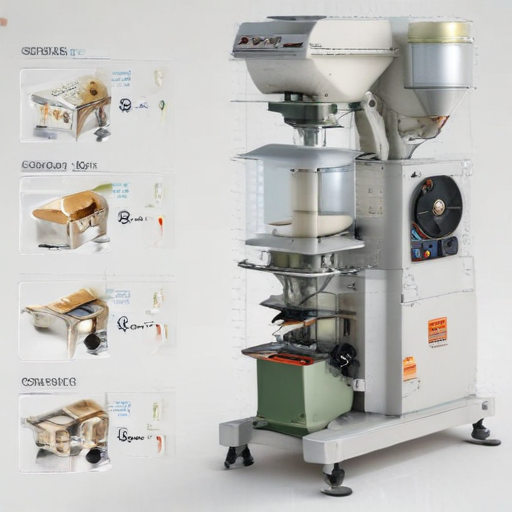
How to Select a Reliable Rice Packing Machine
Selecting a reliable rice packing machine involves several critical considerations to ensure efficiency, durability, and suitability for your specific needs.
1. Determine Your Needs: Identify your production scale, desired packaging speed, and specific rice types (e.g., long-grain, short-grain). This helps narrow down the machinery designed for your operational capacity.
2. Choose the Right Type: There are various machines, including automatic, semi-automatic, and manual. Automatic machines are ideal for high-volume production with minimal human intervention, while semi-automatic machines offer a balance between control and automation.
3. Check Machine Quality: Opt for machines made from high-quality materials like stainless steel, which are durable and resistant to rust. Examine the build quality, and look for features such as robustness and safety measures.
4. Assess Technology: Modern machines often come with advanced features like touch screens, programmable logic controllers (PLCs), and automatic weight adjustment. These technologies can enhance precision, efficiency, and ease of use.
5. Reputation of Manufacturer: Research manufacturers known for reliability and good after-sales service. Read reviews, seek recommendations, and consider the availability of customer support and replacement parts.
6. Compliance with Standards: Ensure the machine complies with industry standards and certifications, like ISO, CE, or any local regulations, ensuring safety and quality.
7. Flexibility and Adaptability: Choose a machine that can adapt to different packaging sizes and formats. This flexibility allows you to respond to market demands without needing expensive upgrades.
8. Cost vs. Value: While budget is crucial, consider the overall value. A reliable machine might have a higher upfront cost but can offer better long-term benefits, like reduced downtime and maintenance costs.
9. After-Sales Support: Ensure the manufacturer provides comprehensive after-sales support, including installation, training, and maintenance services.
By carefully evaluating these factors, you can select a rice packing machine that meets your operational requirements and ensures consistent, high-quality packaging.
List "Rice Packing Machine" FAQ
Rice Packing Machine FAQ
-
What is a rice packing machine?
A rice packing machine is an automated or semi-automated device designed to package rice in various sizes and types of containers, such as bags, boxes, or pouches. It ensures precise measurement, sealing, and labeling for efficient distribution. -
What types of rice packing machines are available?
- Automatic: Fully automated systems for high-speed production.
- Semi-automatic: Combines manual and automatic processes, ideal for medium-scale operations.
- Vacuum Packaging: Removes air to extend shelf life.
- Weighing and Filling: Ensures precise portion control. -
How does a rice packing machine work?
Generally, the machine operates through several stages: rice is loaded into the hopper, weighed, dispensed into packaging material, sealed, and then labeled. -
What are the benefits of using a rice packing machine?
- Efficiency: Speeds up the packing process.
- Accuracy: Ensures consistent package weight.
- Shelf life: Enhanced sealing techniques can prolong freshness.
- Labor cost: Reduced need for manual labor. -
What should I consider when choosing a rice packing machine?
- Production capacity: Match the machine’s speed to your needs.
- Type of rice: Different machines handle various types and sizes of rice.
- Budget: Factor in initial cost and maintenance.
- Space: Ensure adequate physical space for installation. -
How do I maintain a rice packing machine?
Regular cleaning, lubrication of moving parts, and periodic inspections of seals and electrical components are essential for optimal performance. -
Are rice packing machines customizable?
Yes, many manufacturers offer customizable options to tailor the machine to specific requirements, such as packaging size, speed, and additional features like tamper-evident seals. -
What safety features are included?
Modern rice packing machines come equipped with safety guards, emergency stop buttons, and overload protection to ensure operator safety.
For any additional queries, it’s best to consult the manufacturer’s manual or customer service.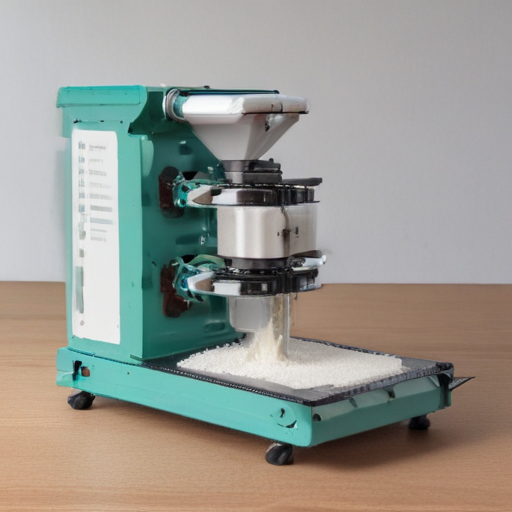
Top 10 FAQ with answer about Rice Packing Machine for Buyer Sourcing from China
Certainly! Here's a concise set of top 10 FAQs about sourcing rice packing machines from China:
-
What types of rice packing machines are available?
- Various models such as automatic, semi-automatic, vacuum packing, and multi-head weighing machines are available. Each type caters to different packaging requirements and production scales.
-
What is the lead time for a rice packing machine?
- Typically, lead times range from 2 to 8 weeks, depending on machine complexity and customization. Standard models may have shorter lead times compared to tailored solutions.
-
How do I ensure the quality of the rice packing machine?
- Look for suppliers with international certifications (e.g., ISO, CE). Request detailed specifications, material lists, and performance videos. Consider third-party inspections to verify quality before shipping.
-
What is the typical cost of a rice packing machine from China?
- Prices vary widely based on functionality and capacity, ranging from $3,000 for basic models to over $50,000 for advanced, fully automated systems. Additional costs may include shipping, customs duties, and installation.
-
Are these machines customizable?
- Yes, many Chinese manufacturers offer customization to meet specific needs like different packing sizes, materials, or added features like date printing and labeling.
-
What are the warranty and after-sales support terms?
- Most suppliers provide a 1-year warranty covering parts and technical support. Ensure clear terms regarding warranty coverage, and ask about extended service plans and availability of spare parts.
-
Can I visit the factory before making a purchase?
- Yes, credible suppliers often welcome factory visits. This allows you to inspect production facilities, test machines, and discuss customization.
-
How do I handle shipping and logistics?
- Suppliers usually handle shipping arrangements upon request. You can opt for FOB (Free on Board) or CIF (Cost, Insurance, Freight). Collaborate with a reliable freight forwarder for smooth customs clearance.
-
What payment terms are accepted?
- Common payment terms include T/T (Telegraphic Transfer), L/C (Letter of Credit), and sometimes PayPal or credit cards for smaller transactions. Initial deposits typically range from 30% to 50%.
-
How do I ensure compliance with local regulations?
- Verify that the machine adheres to local safety and hygiene standards. Suppliers can provide necessary certification documents. Liaise with local regulatory bodies for additional compliance requirements.
This concise guide should help you navigate sourcing rice packing machines from China effectively.

